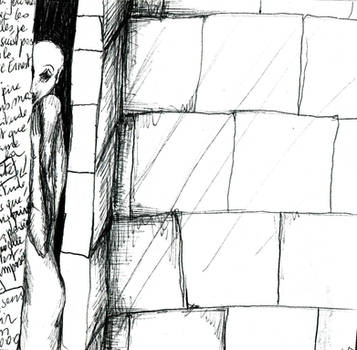Deviation Actions
Description
The hardest adjustment Oswalt had to make for his new home was Ganymede's measurement of time. It was reasoned by the first colonists that, because the new world shared nothing in common with Earth in terms of seasons and axis rotations, adopting a metric system of time was the most appropriate choice. After all, what was the point of having a calender with a new year once every 7.15 Earth days? Anticipating that a new system of time would be confusing to recent immigrants, the Ganymede government printed pamphlets, books, and audio to explain it all. Oswalt was thumbing through the pamphlet he kept in his coat pocket, re-familiarizing himself with the document while he waited for his turn in the employment centre.
By now, you've surely noticed that time measurement on the Jovian colonies is very different from Earth. Our system is adapted from the decimal system of time developed in France during the revolution of the 18th century. How does it work? Here's a breakdown of the basic units of measurement:
100 seconds = 1 minute
100 minutes = 1 hour
100 hours = 1 day
10 days = 1 month
10 months = year
This would mean that there are 100 days in a Jovian Colony year. This system does not use weeks. For illustrative purposes, one Jovian Colony Year (JCY for short) is the equivalent of approximately 400 Earth days.
The construction of the Jovian Colony day was a complicated one for the first colonists to design. A 10 hour day, such as the one used during Revolutionary France, was deemed far too short to be of any use. But in keeping with the base 10 system, they also found that the 100 hour day had its own problem of being too long! Therefore, to make the everyday functioning of citizens an easier process, each day was broken into four quarter-days, consisting of 25 hours each.
So now that we know the basic components of a Jovian Colony calender, let's look at how the time and the date are written. Time is written to reflect quarter-days, and dates account for both full-days and the current month. As an example, let's use 04:13:65 on 07/02/0340 to breakdown how it works. Here, the number 4 represents the current quarter-day, 13 represents the current hour, and the number 67 represents the number of minutes that have passed in this hour. As well, the number 07 refers to the current full-day, 02 refers to month in which it appears, and 340 refers to the year. Therefore, this sample represents the 4th quarter of the 7th day in the 2nd month of the 340th year, in which 13 hours and 65 minutes have passed.
The rest of the document was filled with examples of situations that refer to time. “Hello! How has your quarter been?,” an inoffensively drawn man says to greet to his equally inoffensive wife. “I was born on day 3 of month 10, 332,” a inoffensive woman says to her date. In the later pages of the pamphlet there was a chart for converting Earth dates to the Jovian Colony equivalent, but he hadn't needed to use it thus far.

















![[self-righteous suicide]](https://images-wixmp-ed30a86b8c4ca887773594c2.wixmp.com/f/cbcf3ffb-cc87-44d3-ae1a-800ab28eacb1/d68fpz3-8c645fbe-bf18-4cd6-8304-b7c6865d5967.jpg/v1/crop/w_184)















